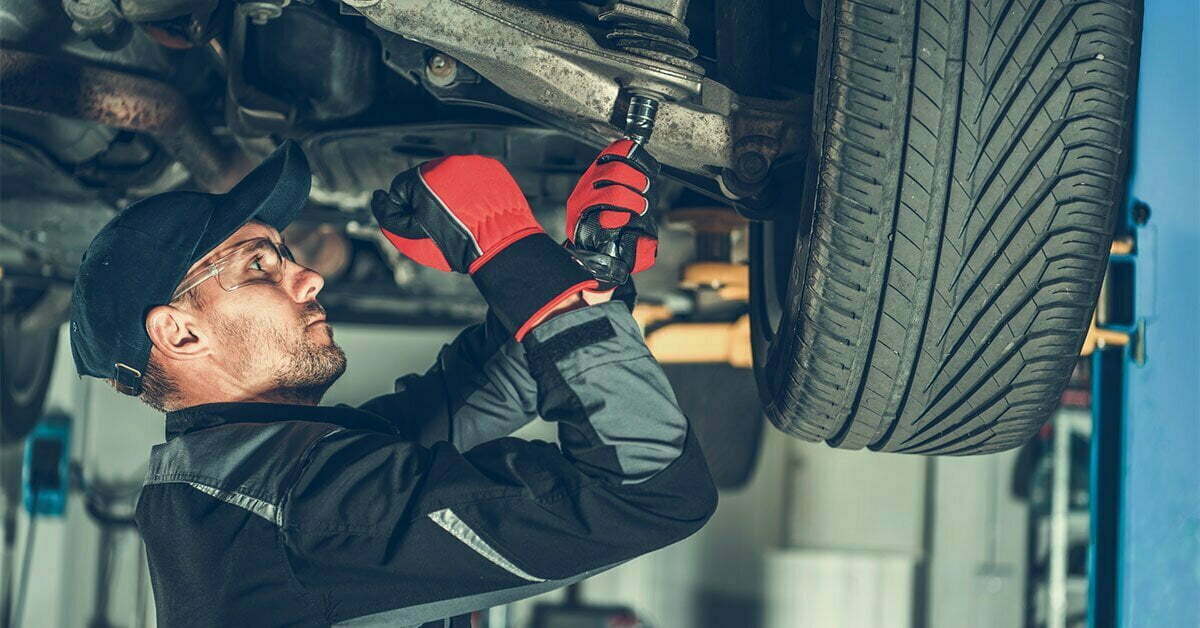Shock absorbers aren’t just there for ride comfort; they keep your tyres glued to the road. All the movement created by driving, whether it’s braking, accelerating or travelling over uneven surfaces, creates vertical energy that wants nothing more than to make your car jump. If you didn’t have shock absorbers, every trip would be like a Dirty Harry car chase through San Francisco, with more time spent in the air than on the ground.
Unsafe and uncomfortable. Knowing when you need shock absorber replacement is, therefore, good knowledge to have. Unfortunately, it’s not simply a matter of time; how you drive and where also come into play. Our cars are always trying to communicate with us, however, and there are ways in which they’ll tell us that we’re riding on worn shocks.
What are shock absorbers?
Contrary to popular belief, shock absorbers do not hold up your car. They are there to control the movement of a vehicle’s springs and suspension. They smooth out bumps and vibrations and keep the tyres stuck to the road so you can brake, accelerate and turn – also known as controlling your car.
Shock absorbers are oil pumps. They consist of a piston attached to a piston rod which works within hydraulic fluid in a pressure tube. As you drive around and the suspension moves up and down, the hydraulic fluid is forced through tiny holes inside the piston. Because only a small amount of fluid can pass through these holes, the movement of the piston rod is slowed, which in turn slows the movement of the suspension and springs.
It’s a wonderfully simple process that converts the kinetic energy of movement to thermal energy which is then released into the atmosphere through heat exchange.
How long do shock absorbers last?
Unfortunately, there’s no magic number. If you drive predominately in the city at a sedate pace and only on pristine tarmac, you could get up to ten to fifteen years out of your shock absorbers. If you live in reality and have to deal with potholes every now and again, occasionally take a corner too fast and sometimes come across an unsealed road, the lifespan could be closer to five to ten years.
The more aggressively you drive, the more work shocks have to do. The same goes for rough and uneven surfaces. These factors will lead to more frequent shock absorber replacement.
What are the signs of impending shock absorber replacement?
It takes longer to stop.
Most people are instinctively aware of their car’s personality (yes, they have personalities). You should notice if your car is taking longer than usual to come to a halt. If you do, it’s a likely sign that the shocks are worn.
Lurching and swerving.
If when you brake the car swerves or lurches, the shocks are tired and need to be checked.
Increased vibration.
When shock absorbers are working at their best, there should be little vibration through the steering wheel. So, if you notice an increase in vibration, it’s time to have your shocks checked.
Sideways movement in windy conditions.
We usually feel the effects of strong winds when we’re driving in more open environments. If, however, you notice more sideways movement than usual, it’s a sure sign that your shock absorbers are struggling to do their job. Have them inspected.
If this car is rocking… you might need your shock absorbers replaced.
Cars that rock back and forth excessively when going over railway tracks, speed bumps or potholes should have their shocks looked at.
Don’t wait for the big shock
Shock absorbers play a massive role in allowing you to control your car. If you let them degrade too far, you’re putting yourself, your passengers and other road users at risk. If you happen to be listening to what your car is trying to say and pick up on any of the above signals, drop in to BM Tech so our expert team can run an eye over your shock absorbers.
